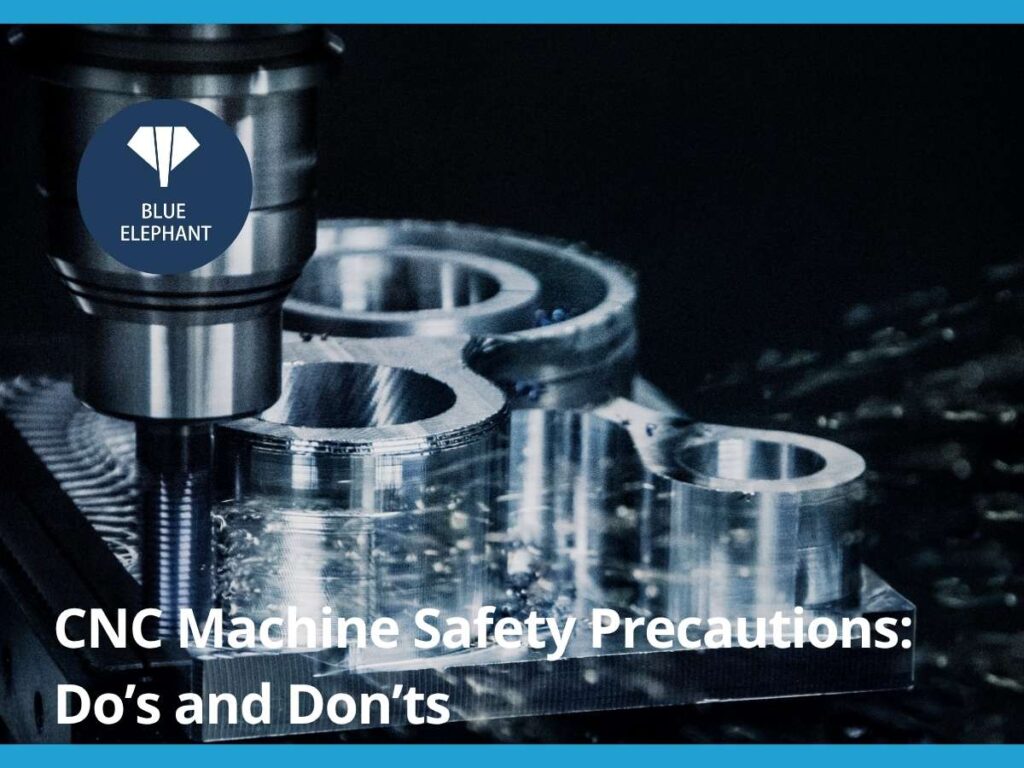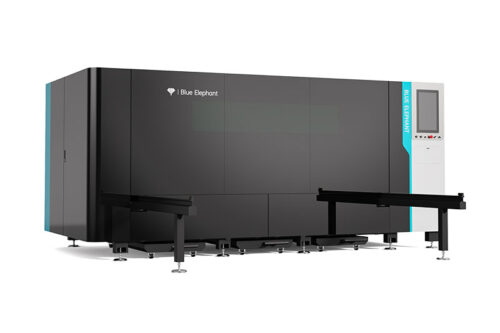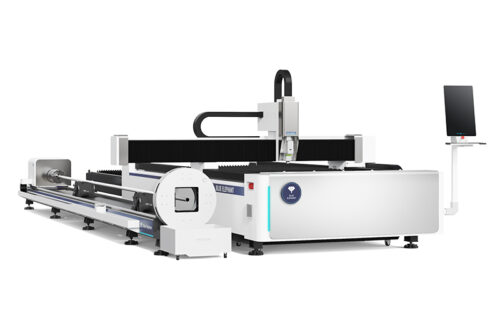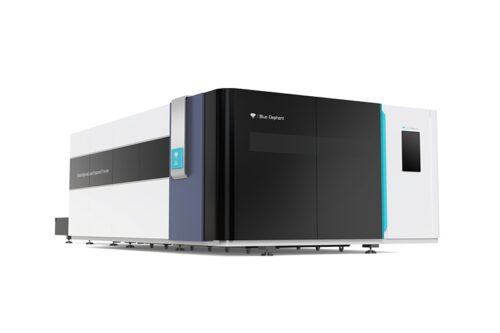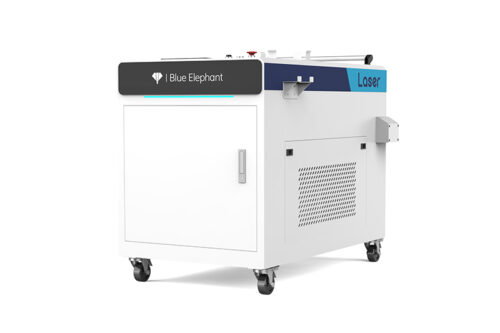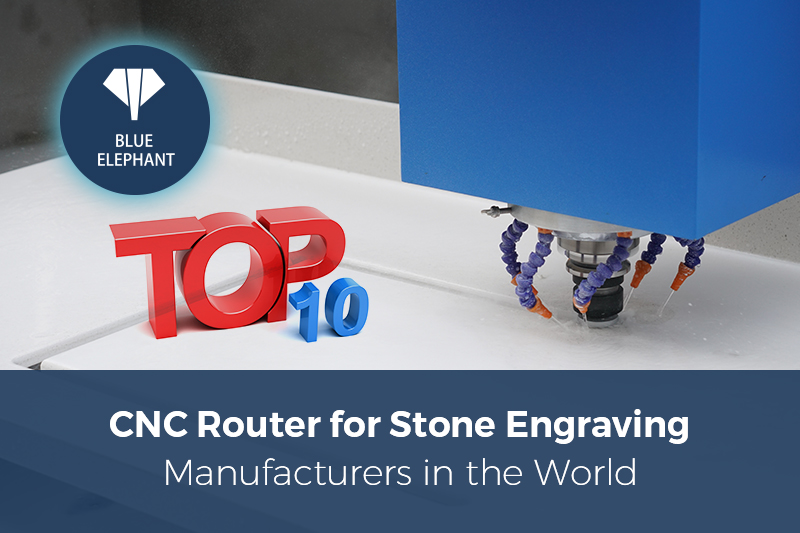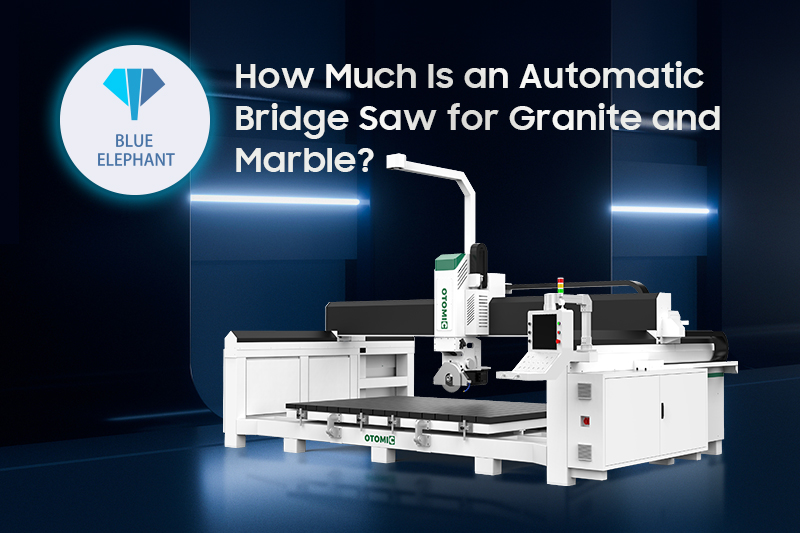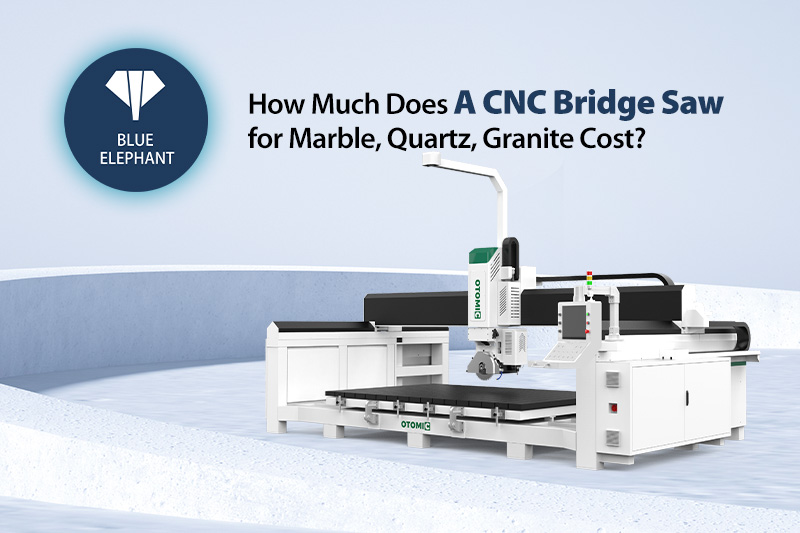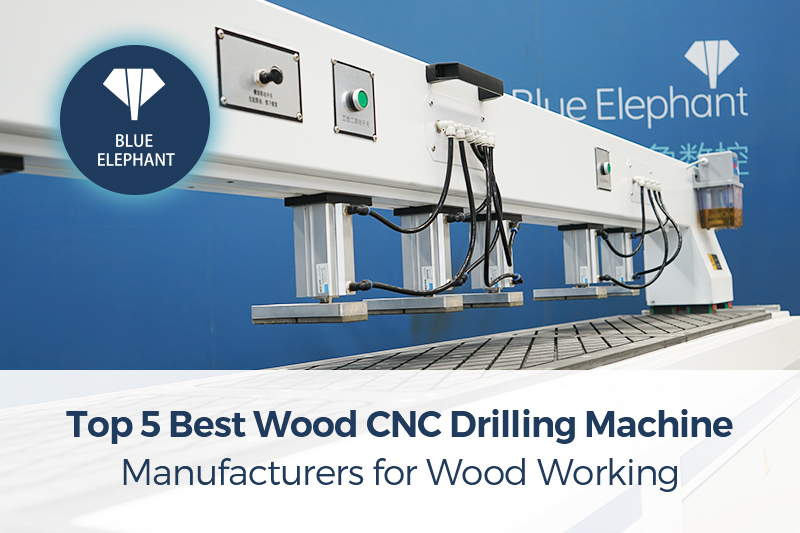I’ll never forget the day one of my best operators made a simple mistake—and it nearly cost us a $50,000 CNC machine. A miscalculated tool offset caused a violent crash, sending shards of carbide flying.
No one got hurt, but the downtime and repairs were brutal.
Mistakes like this happen more often than you think, even in the most experienced shops. That’s why CNC safety isn’t just a box to check—it’s what keeps your operations running smoothly.
You can trust this guide because it’s built on real-world experience, industry best practices, and lessons learned from costly mistakes.
I’m not here to give textbook advice; I’m here to help you avoid accidents, downtime, and financial losses.
Here’s what you’ll get in this article:
- The do’s and don’ts of CNC safety—practical, no-nonsense advice
- Safety precautions that protect your employees and machines
- The long-term benefits of proper safety implementation
A single mistake can cost you time, money, and even lives.
So, let’s get started!
1. What are CNC Machine Safety Precautions?
CNC safety precautions are the non-negotiable steps that keep your operators, equipment, and business protected. They’re the barriers between precision and disaster, between profitability and preventable loss.
Think of them as your insurance policy against accidents. They ensure that every machine, every tool, and every operator in your shop is set up for success, not failure.
And here’s the thing…
These aren’t just rules on a safety poster. They’re habits. They’re culture. Because when safety is an afterthought, one mistake can take everything down with it. These precautions include:
- Personal Safety for Protecting the Operator First
- Machine Setup & Maintenance the First Line of Defense
- Emergency Protocols When Things Go Wrong
2. Importance of Safety Precautions
I’ve seen firsthand what happens when safety isn’t taken seriously. A single mistake can set off a chain reaction—injured workers, expensive machine repairs, and days (or even weeks) of lost production.
Here’s the reality: CNC machines don’t make small mistakes. When something goes wrong, it goes very wrong. And when safety isn’t prioritized, your business pays the price—literally. Let’s break down exactly why CNC safety precautions are non-negotiable:
Protecting Your Operators
Your CNC machines might be expensive, but your employees are irreplaceable. Without the right safety measures, your team faces serious risks every single day.
- Flying debris, tool breakage, and moving parts can cause severe injuries in an instant.
- Long-term exposure to noise, fumes, and metal dust can impact health over time.
- Operator fatigue and distractions lead to dangerous mistakes that could have been avoided.
When you implement strong safety protocols, you’re not just preventing injuries—you’re building a culture where employees feel valued and protected. And that means higher morale, lower turnover, and a more productive workforce.
Preventing Costly Machine Damage and Downtime
A single machine crash can cost thousands of repairs and bring production to a grinding halt. And in a fast-paced manufacturing environment, downtime is your worst enemy.
- Misaligned workpieces, incorrect feed rates, or dull tools can lead to serious tool crashes.
- Overloaded spindles and skipped maintenance wear down machines faster, leading to premature failure.
- Ignoring minor malfunctions often turns small issues into major breakdowns.
By enforcing safety checks, proper machine handling, and routine maintenance, you’re ensuring that your CNC machines run flawlessly and efficiently. Because in this business, every minute of downtime costs money.
Staying Compliant & Avoiding Legal Liabilities
Safety isn’t just good business—it’s the law. Failing to follow proper safety guidelines can land your company in serious legal trouble.
- OSHA violations and lawsuits can lead to massive fines, investigations, and shutdowns.
- Worker compensation claims and insurance hikes drain your profits fast.
- A bad safety record damages your reputation, making it harder to attract skilled workers.
Taking safety seriously means staying compliant, reducing liability risks, and maintaining a strong industry reputation.
Boosting Efficiency & Overall Productivity
A safe workplace isn’t just about avoiding problems—it’s about improving performance. When safety is a priority, your entire operation runs smoother.
- Well-trained operators work faster and more confidently when they know the risks are minimized.
- Proper maintenance and handling reduce machine wear and improve precision.
- A proactive safety culture eliminates costly errors and rework.
The bottom line? Safe operations = More uptime. More uptime = More profitability.
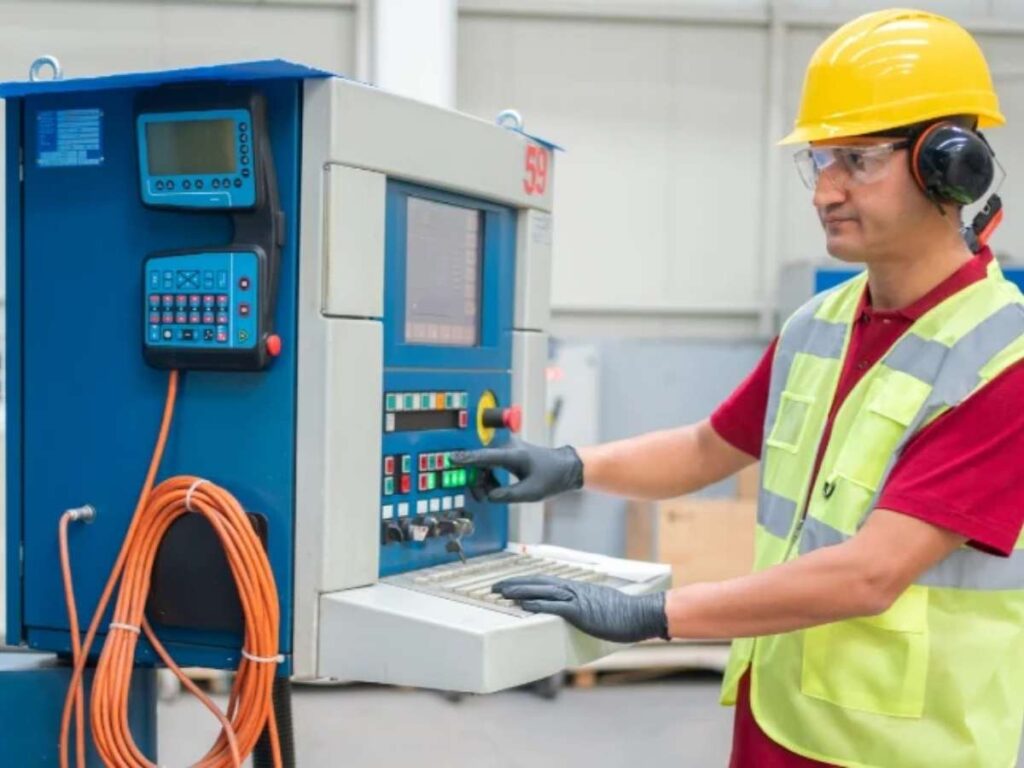
3. Do’s of CNC Machine Safety
At Blue Elephant, we offer CNC machines that are powerful, precise, and efficient, especially when handled with discipline and care. Safety isn’t just about compliance; it’s about ensuring smooth operations, protecting employees, and maximizing productivity.
Below are the essential do’s every CNC shop must enforce to create a safe, efficient, and accident-free environment.
Conduct Pre-Operation Safety Checks
Before powering up a CNC machine, ensure that every component is in optimal condition. A single oversight can lead to tool breakage, workpiece damage, or dangerous malfunctions.
- Inspect the machine for loose wires, worn-out parts, or abnormal sounds
- Verify that all safety guards and interlocks are in place and functional
- Check lubrication levels, coolant systems, and air supply for smooth operation
- Confirm that the workpiece is secured properly to prevent movement during cutting
- Run a dry test or simulation to verify the toolpath before full-speed machining
Enforce the Use of Proper Personal Protective Equipment (PPE)
Operators must be fully equipped with the right protective gear before engaging with CNC machinery.
- Safety glasses or face shields to protect against flying debris
- Hearing protection to reduce noise exposure from high-speed machining
- Steel-toe boots to prevent injuries from dropped tools or heavy parts
- Fitted work attire to eliminate the risk of entanglement in rotating components
No exceptions. No shortcuts. Safety starts with proper protection.
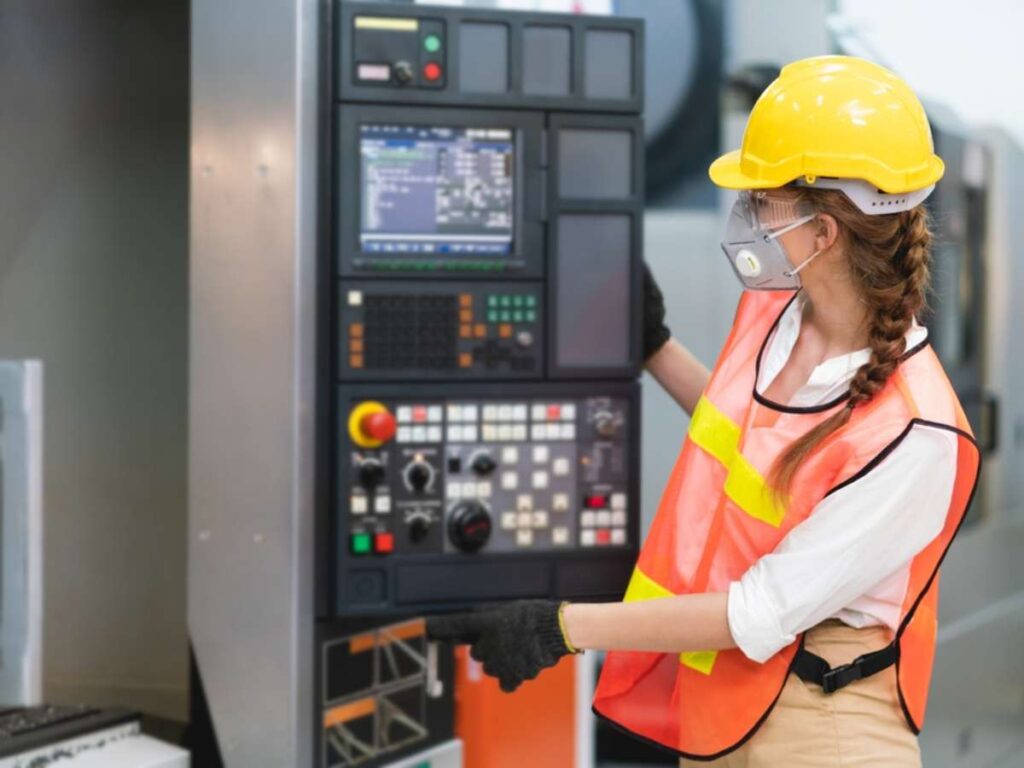
Maintain a Clean and Organized Work Area
A cluttered workspace is a breeding ground for accidents. Clean, well-maintained environments lead to higher efficiency and fewer hazards.
- Remove metal shavings and debris after each machining cycle
- Ensure walkways are clear of cables, tools, and obstructions
- Store all tools, wrenches, and measuring devices in designated areas
- Dispose of coolant waste and lubricants properly to prevent slips and contamination
Follow Correct Machine Operating Procedures
Every CNC machine we produce at Blue Elephant adheres to strict operational guidelines. Ignoring them leads to costly errors, tool damage, and serious injuries.
- Always operate the machine within its designed limits—overloading spindles causes excessive wear
- Use correct tool speeds, feed rates, and cutting depths for each material
- Stand clear of moving parts and avoid reaching into the machine while it’s running
- Follow proper startup and shutdown procedures—never force a system reboot mid-operation
- Listen to abnormal sounds, vibrations, or overheating, they signal potential failures
Train and Educate CNC Operators Regularly
Even experienced machinists must stay updated on best practices, new technology, and evolving safety protocols.
- Conduct regular safety training and refresher courses
- Train operators to recognize hazards and respond to emergencies
- Encourage employees to report potential safety risks immediately
- Keep safety manuals and emergency procedures accessible
Implement Emergency Stop and Safety Protocols
CNC machines operate at high speeds, leaving no room for delayed reactions. Every second counts in an emergency.
- Ensure emergency stop buttons are easily accessible
- Train all operators on how to shut down the machine safely in case of a malfunction
- Conduct drills for fire safety, electrical failures, and machine crashes
- Keep fire extinguishers, first aid kits, and PPE readily available
When accidents happen, rapid response is the difference between minor disruption and major catastrophe.
Prioritize Routine Machine Maintenance
A well-maintained CNC machine is safer, more efficient, and more profitable. Preventative maintenance is the key to longevity and reliability.
- Check belts, bearings, and moving parts for signs of wear
- Ensure spindles and tools are properly aligned and calibrated
- Keep coolant and lubrication levels within recommended limits
- Update software and firmware regularly to avoid glitches and crashes
4. Don’ts of CNC Machine Safety
Neglecting CNC machine safety isn’t just a risk—it’s a liability. A single misstep, shortcut, or ignored warning sign can lead to injuries, machine damage, and costly downtime. Safety in CNC machining isn’t just about what you should do; it’s also about what you must never do.
Here are the critical don’ts of CNC machine safety that every business must enforce to protect operators, equipment, and workflow efficiency.
Don’t Operate Without Proper Training
CNC machines require skill, precision, and expertise. Allowing untrained personnel to operate them is an accident waiting to happen.
- Never let an unqualified operator run a CNC machine unsupervised
- Don’t assume that a new hire will “figure it out” without proper training and certification
- Never ignore refresher courses and safety updates, even for experienced operators
Don’t Wear Loose Clothing or Improper PPE
CNC machines have powerful rotating parts that can pull in anything loose, hair, sleeves, gloves, or jewelry. One moment of carelessness can lead to a catastrophic injury.
- Never wear loose clothing, dangling jewelry, or untied long hair around CNC machines
- Don’t use gloves while operating a machine with rotating components, they can get caught
- Never skip safety glasses, face shields, or hearing protection
Don’t Skip Pre-Operation Checks
Skipping machine checks is a shortcut that costs time, money, and safety. A minor issue can quickly escalate into tool crashes, spindle failure, or workpiece misalignment.
- Never start the machine without checking for loose bolts, tool wear, or misaligned parts
- Don’t ignore strange noises or vibrations, these are early warning signs of bigger issues
- Never assume the previous shift left the machine in perfect condition, double-check everything
Don’t Override Safety Features or Bypass Guards
CNC machines come with built-in safety mechanisms for a reason. Disabling them may seem like a time-saver, but it puts operators and machines at extreme risk.
- Never bypass safety interlocks, limit switches, or emergency stops
- Don’t remove machine guards, barriers, or covers to “work faster”
- Never modify or override software safety settings without expert guidance
Cutting corners on safety will cost you more than the few seconds you save.
Don’t Reach Into a Running Machine
It doesn’t matter how small the adjustment seems, never reach inside an active CNC machine. Moving parts operate at high speeds, and even a moment’s hesitation can cause severe injuries.
- Never attempt to adjust the workpiece or tooling while the spindle is running
- Don’t remove metal shavings or debris with bare hands, use a proper chip brush or air gun
- Never assume that a machine has fully stopped, wait for complete shutdown before approaching
Don’t Use Damaged or Incorrect Tools
Using dull, damaged, or improper tools doesn’t just affect quality, it can lead to tool breakage, machine crashes, and operator injuries.
- Never use a cracked, worn, or unbalanced cutting tool
- Don’t install the wrong tool for the material, it leads to excessive stress and failure
- Never continue machining if you suspect a tool is defective, stop and replace it immediately
Don’t Neglect Routine Maintenance
Ignoring regular maintenance is a direct path to unexpected failures, production downtime, and expensive repairs. CNC machines are high-precision instruments that need consistent care.
- Never delay scheduled inspections, lubrication, and calibration
- Don’t ignore air filtration, coolant levels, or belt tension checks
- Never assume that minor issues will “fix themselves” over time—small problems escalate fast
Don’t Ignore Emergency Protocols
Emergencies can happen at any time. Without proper preparedness and training, minor incidents can turn into major disasters.
- Never operate a CNC machine without knowing the location of emergency stops
- Don’t panic if something goes wrong, stay calm and follow emergency shutdown procedures
- Never ignore safety drills or emergency training sessions, they could save lives
Conclusion
That tool crash I mentioned earlier? It cost us thousands in repairs, but the real lesson was priceless—safety isn’t just about rules, it’s about protecting people, productivity, and profits.
By following these CNC safety do’s and don’ts, you’re not just preventing accidents—you’re creating a smarter, more efficient workplace.
So, what’s stopping you from making safety your top priority?
A single mistake can cost you big, but the right precautions will save you time, money, and stress.
Need help improving CNC safety in your shop? Contact us today—we’ve got your back.
Explore More Helpful Resources
For more in-depth knowledge, take a look at these recommended reads. We think you’ll find them useful:
Still haven’t found what you’re looking for? Don’t hesitate to contact us. We’re available around the clock to assist you.


